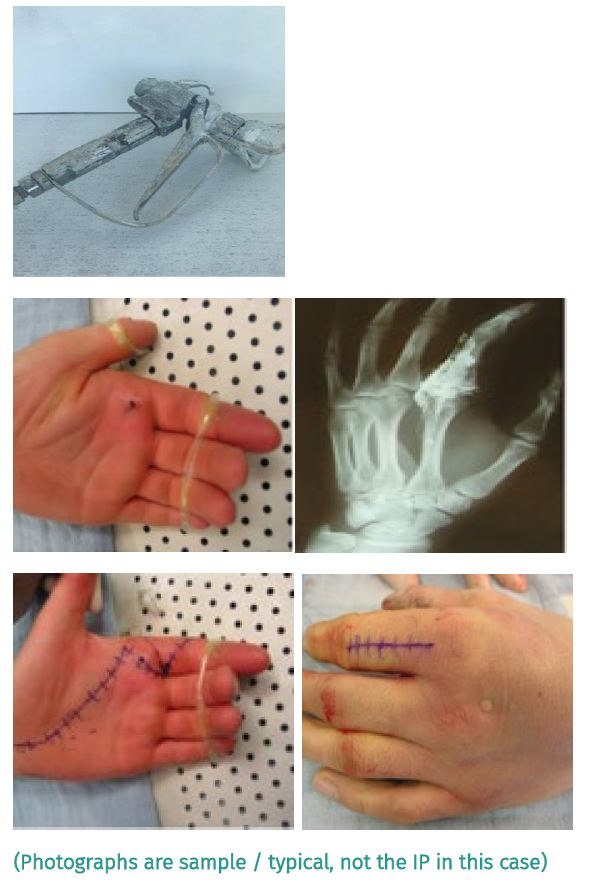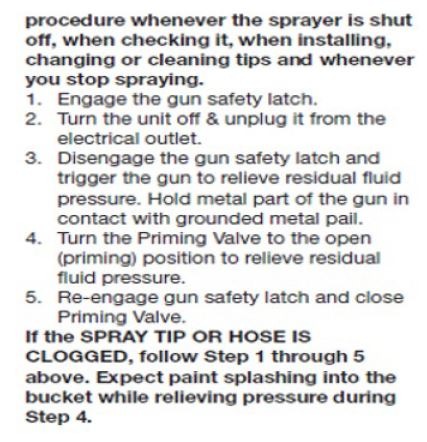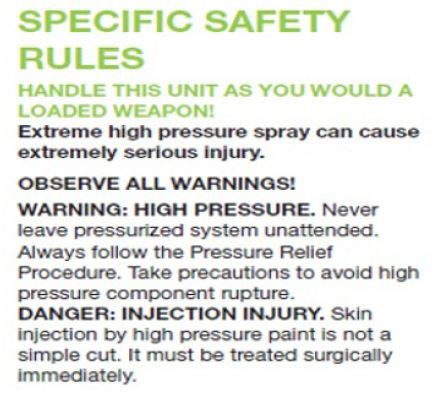What Happened?
An operative on a project received a compressed air injury to the palm of his hand from a paint sprayer.

Why it Happened?
- The IP was involved in the assembly and spray painting of site permit booths.
- The nozzle of the sprayer blocked, and the IP started to clean/unblock the nozzle.
- It appears that while disassembling the nozzle, the IP inadvertently touched the trigger releasing some of the stored compressed paint which remained in the line.
- The IP received an injection injury to the palm of his hand. The size of the puncture wound was approximately 2mm with a small area of localized swelling.
What’s Been Found?
- The operative was wearing gloves, but the paint and compressed air penetrated the glove before piercing the IP’s skin and injecting paint into the IP’s hand.
- The operative turned off the compressor but did not fully de-pressurise the system (correct procedure) before he started cleaning/ unblocking the equipment.
- The spray-painting tool works at a deceivingly high pressure as it leaves the nozzle in the form of a narrow jet before dispersing or misting out.
Recommendations
- Manufacturer’s Instructions – to be present and reviewed before using any new tool or piece of equipment.
- Operators of high-pressure guns and their supervisors to be informed about the seriousness of such injuries.
Lessons Learnt
- High-pressure injection injuries need immediate medical treatment.
- Research has shown that patients usually have minimal complaints following the event. Mostly there is only a small puncture wound to the skin. After some hours swelling, pain and sensibility impairments appear.
- The initially mild symptoms lead to a delay in seeking treatment and so damage can spread out, increasing the chance of permanent complications and amputation.
- Consider provision of ‘Line of Fire’ awareness training.
First Aid Response
- Do take the Injured Party to A&E as fast as possible
- Do Not explore the puncture wound
- Do Not use a compression bandage
- Do Not remove the material with a solvent
- Do Not attempt to push the fluid to the outside or make a relieving incision for decompression
- Do Not apply an ice pack to reduce swelling.


